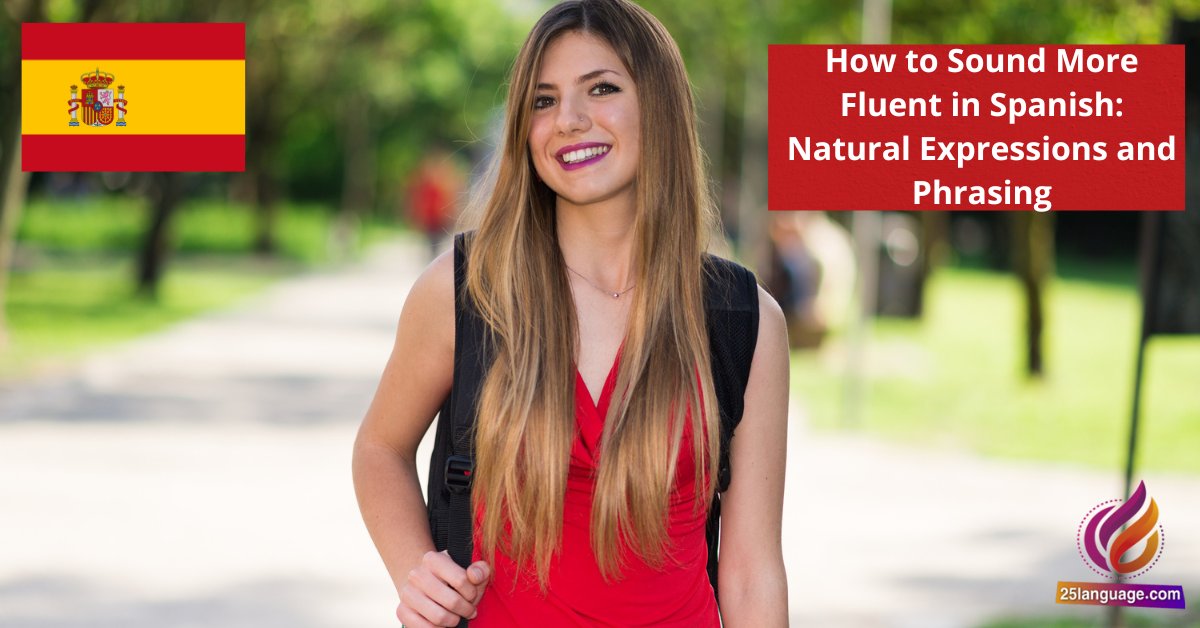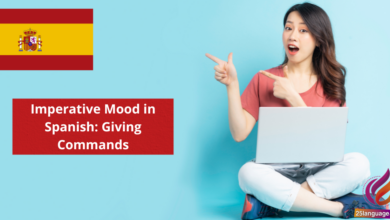How to Sound More Fluent in Spanish

Imagine stepping into a vibrant Spanish-speaking country and confidently engaging in conversations with locals, effortlessly expressing your thoughts and emotions.In this lesson, we’ll explore natural expressions and phrasing that can elevate your fluency and help you sound more like a native speaker. By mastering these key phrases and strategies, you’ll not only broaden your vocabulary but also enhance your cultural understanding, making your Spanish interactions richer and more enjoyable. Ready too dive in?
Mastering Natural Spanish: Enhancing Your Fluency with Everyday Expressions
To enhance fluency in Spanish, it’s essential to master everyday expressions. Familiarizing yourself with these phrases not only boosts your vocabulary but also helps you sound more natural in conversations. Some commonly used expressions include:
- ¿Qué tal? – “How’s it going?”
- ¡Qué pena! – “What a pity!”
- No hay problema. – “No problem.”
- ¡Por supuesto! – “Of course!”
Understanding the context in which these expressions are used can dramatically improve fluency. For example,”¿Qué tal?” is often used among friends or acquaintances as a casual greeting. Another crucial aspect is the use of the subjunctive mood, especially in phrases expressing wishes or doubts. For instance, “Espero que tengas un buen día” translates to “I hope you have a good day.” This structure highlights the subjunctive’s significance in Spanish, indicating that it’s more tentative or subjective.
| Spanish Expression | Usage | English Translation |
|---|---|---|
| ¿Qué tal? | Casual greeting | How’s it going? |
| ¡Qué pena! | Expressing sympathy | What a pity! |
| No hay problema. | Assuring someone | No problem. |
| ¡Por supuesto! | Affirmative response | Of course! |
| Espero que tengas un buen día. | Wish in subjunctive | I hope you have a good day. |
Fluency unlocked: Embracing Authentic Phrasing in Spanish Conversations
To achieve fluency in Spanish, it’s essential to embrace authentic phrasing that reflects the nuances of everyday conversation. Familiarizing oneself with common expressions can significantly enhance your ability to communicate naturally. Here are some everyday phrases that can help elevate your conversational skills:
- ¡Qué chévere! (How cool!) – This is a popular expression used in many Latin American countries to express excitement or approval.
- No hay problema. (No problem.) – A reassuring phrase often used to indicate that something is fine or that you’re willing to help.
- ¡Hasta luego! (See you later!) – A casual way to say goodbye that keeps the conversation pleasant.
- ¿Qué tal? (How’s it going?) – A common way to greet someone and inquire about their wellbeing, similar to “What’s up?”
Understanding how to structure sentences with these phrases is equally important. Spanish often uses reflexive verbs and pronouns, which can alter the meaning of a sentence. For instance, me gusta translates to I like but literally means “it pleases me.” Here’s a fast table to illustrate useful phrases and their grammatical structures:
| Spanish Phrase | Grammer Rule/Structure | English Translation |
|---|---|---|
| Me gustaría… | Conditional verb form + infinitive | I woudl like… |
| Tengo que… | Present tense of tener + infinitive | I have to… |
| Voy a… | Present tense of ir + a + infinitive | I’m going to… |
| Quisiera… | Conditional form of querer | I would like… |
Speak Like a Native: Incorporating Natural Idioms and expressions in Spanish
To communicate effectively in Spanish, it’s essential to incorporate idiomatic expressions that convey emotions, humor, and cultural nuances. Spanish idioms often don’t translate directly into English, making it crucial to understand their meanings and contexts. For instance, the expression “dar en el clavo” translates to “hit the nail on the head”, which means to get something exactly right. Another common idiom is “no hay mal que por bien no venga”, which translates to “every cloud has a silver lining.” These expressions enrich conversations and help learners sound more natural and engaging.
- Expressions:
- “Estar en las nubes” – “To be in the clouds” (to be daydreaming)
- “Tomar el toro por los cuernos” – “To take the bull by the horns” (to confront a problem directly)
- Usage:
- integrate idioms in daily conversations.
- Practice with native speakers to learn appropriate contexts.
| Spanish Idiom | Literal Translation | Meaning |
|---|---|---|
| “Más vale tarde que nunca” | “Better late than never” | it’s better to do something late than not do it at all. |
| “A sacar las castañas del fuego” | “To take the chestnuts out of the fire” | To take on a arduous task for someone else’s benefit. |
Elevate Your Spanish: Practical Tips for More Conversational Fluency
To enhance your conversational fluency in Spanish, it is crucial to master the use of common verbs and their conjugations.Regularly incorporating ir (to go), hacer (to do/make), and tener (to have) in your speech can transform your ability to express actions and intentions. Such as, using “Voy a la tienda” (I am going to the store) shows a plan in the near future. Similarly, “Hago la tarea” (I do the homework) is a straightforward way to talk about daily activities.To solidify your understanding, consider the following key tips:
- Practice conjugating verbs in diffrent tenses, focusing on the present simple for immediate actions.
- Incorporate these verbs into questions, such as “¿Qué haces hoy?” (What are you doing today?) to promote engagement.
- Use transitions like “Luego” (Later) and “Después” (Afterwards) to create flow in your conversations.
Vocabulary is another cornerstone of conversational fluency. Understanding and using everyday expressions can definitely help in real-life situations.As a notable example, phrases like “¿Cómo estás?” (How are you?) and “¡Hasta luego!” (See you later!) are fundamental in initiating and concluding conversations. Additionally, consider learning various ways to express agreement or disagreement. Phrases such as “Estoy de acuerdo” (I agree) or “No estoy de acuerdo” (I disagree) can significantly enrich your interactions. Below is a table summarizing useful conversational phrases:
| Spanish Phrase | English Translation |
|---|---|
| ¿Cómo estás? | How are you? |
| ¡Hasta luego! | See you later! |
| Estoy de acuerdo | I agree |
| No estoy de acuerdo | I disagree |
Closing remarks
¡felicitaciones por completar esta lección sobre cómo sonar más fluido en español! Hoy hemos explorado una variedad de expresiones naturales y frases coloquiales que no solo enriquecerán tu vocabulario, sino que también te ayudarán a comunicarte de una manera más auténtica y conectada con los hablantes nativos. Hemos visto la importancia de entender el contexto cultural y cómo las palabras y expresiones pueden variar según la región. también discutimos algunas estrategias útiles para incorporar estas expresiones en tus conversaciones diarias.
ahora es tu momento para brillar. Te animo a que practiques activamente estas nuevas expresiones en tus interacciones, ya sea con amigos, en el aula o incluso en las redes sociales. No temas hacer errores; cada intento te acercará más a la fluidez. Recuerda que la práctica y la perseverancia son claves en el aprendizaje de un nuevo idioma.
Continúa explorando y sumergiéndote en el mundo del español. Escucha música, mira películas y participa en conversaciones. Cuanto más te expongas al idioma, más natural se sentirá tu expresión. ¡Sigue adelante y disfruta tu viaje lingüístico!





























